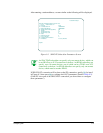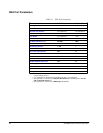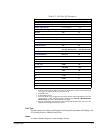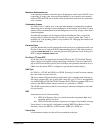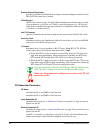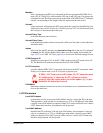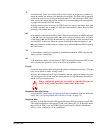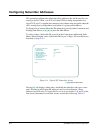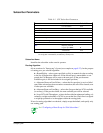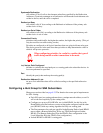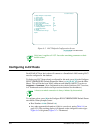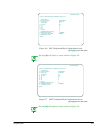
Configuring SNA 9-13
Ti
is the Inactivity Timer, used by the link station to detect an inoperative condition in
either the remote link station or the transmission medium. The timer will be started if
T1
has been reset (for one of the reasons listed under "
Ti
"), and additional LPDUs have
been sent by the remote link station, and there are no outstanding acknowledgments
or responses from the local link station.
If the local station does not receive an LPDU before
Ti
expires, the station must send
an LPDU with the P bit set to
B'1'
to solicit the remote station's status. Recovery then
proceeds as described under "
Ti
."
N3
is the number of Information LPDUs that will be received before an acknowledgment
is sent.
N3
is used in conjunction with
T2
to allow stations to reduce traffic. A counter
is initialized to
N3
, and will be decremented by one each time a valid sequential Infor-
mation LPDU is received. When the counter reaches
0
an acknowledgment is sent.
N3
is reset whenever an Information or Supervisory acknowledgment LPDU is sent by
the local station.
Tw
is the maximum number of sequentially numbered Information LPDUs that the link
station can have outstanding.
N2
is the maximum number of times that an LPDU (including Information LPDUs resent
after a checkpoint operation) will be sent following expiration of
T1
.
Priority
prioritizes intra-nodal traffic; the higher the number, the higher the priority. (This pri-
ority has no effect on traffic exiting a node.)
Priorities are configured on all logical interfaces that use a physical frame relay port.
The device processor in the node uses these priorities to help determine the order in
which it will process protocols.
When configuring priorities, be careful to consider the types of
traffic being routed on other connections in the node.
Bandwidth Allocation Group
assigns the LLC2 host to one of sixteen groups whose parameters regulate bandwidth
usage. See "Configuring Bandwidth Allocation Groups" on page 7-6.
Suppress XIDs
prevents (if
Y
) the SmartSwitch 1800 from returning an XID in response to a null XID.
This might be desirable if the remote TPAD is not running PU 2.1. It should be noted
that even if an XID is sent, an SNRM (Set Normal Response Mode) immediately
follows, so the connection will be established.



